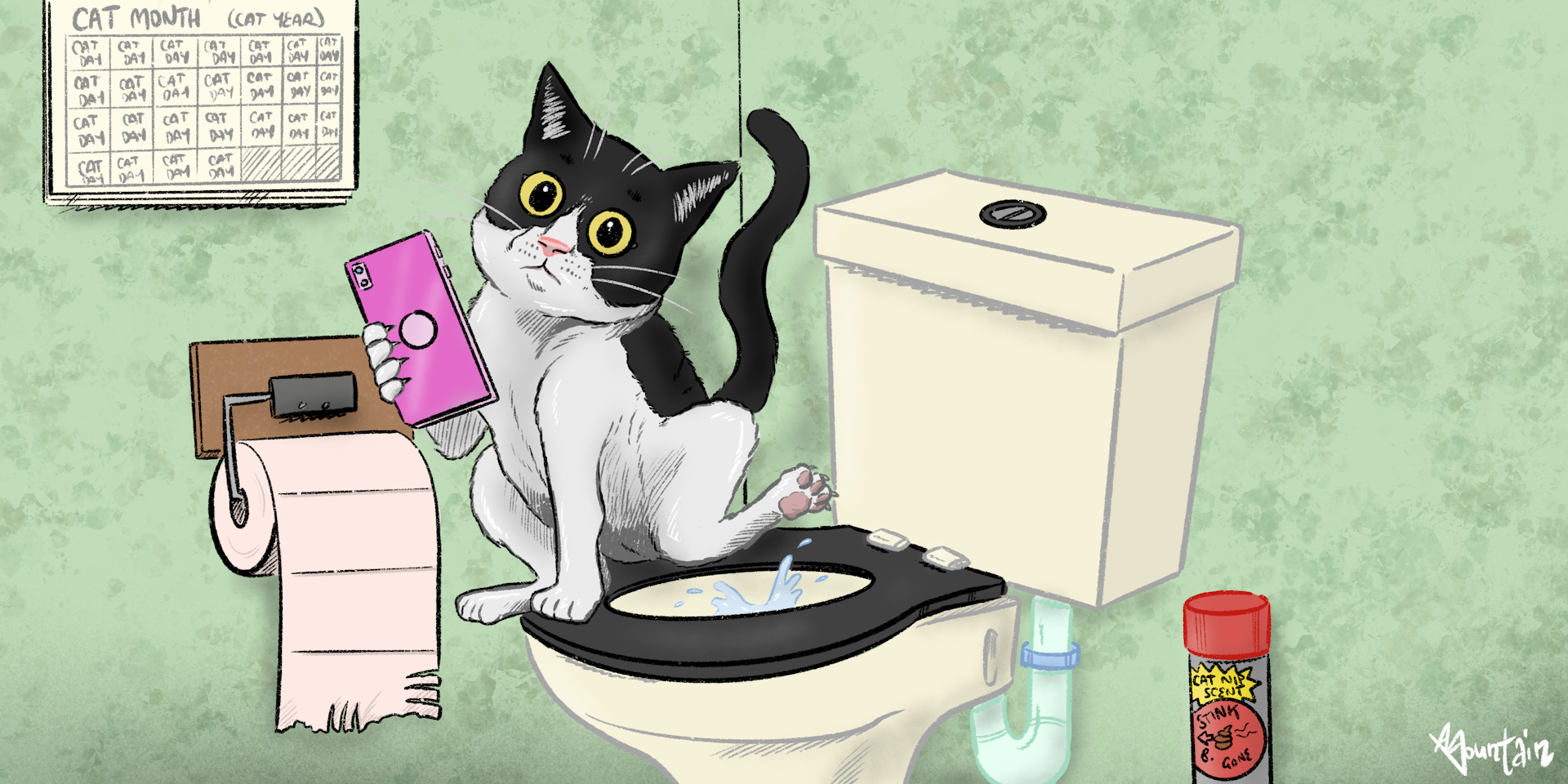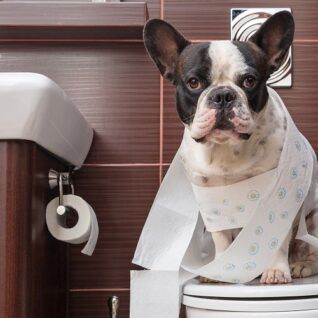Were you interested in answers on Should you flush animal waste down the toilet?

When it comes to taking care of waste, specifically animal waste, many individuals typically turn to the hassle-free choice of flushing it down the commode. However, this seemingly simple solution can have serious repercussions for the atmosphere and public health. In this write-up, we'll explore why flushing animal waste down the bathroom is a negative concept and supply alternate techniques for proper disposal.
Intro
Correct waste disposal is essential for keeping ecological sustainability and public health. While it might appear safe to purge animal waste down the commode, it can bring about various issues, both for the setting and human well-being.
Threats of flushing pet waste
Environmental effect
Flushing animal waste presents damaging germs and pathogens right into waterways, which can negatively affect marine ecological communities. These virus can infect water sources and harm aquatic life, disrupting delicate ecological communities.
Public health concerns
Animal waste contains harmful bacteria such as E. coli and Salmonella, which can position serious wellness risks to humans. Flushing animal waste down the bathroom can infect water supplies, resulting in the spread of conditions and infections.
Alternatives to flushing
Rather than purging pet waste down the commode, there are numerous alternate disposal techniques that are extra eco-friendly and sanitary.
Composting
Composting animal waste is an environmentally friendly method to get rid of it. By composting, organic matter is broken down into nutrient-rich dirt, which can be made use of to fertilize gardens and plants.
Land fill disposal
Disposing of animal waste in a landfill is another alternative. While not as eco-friendly as composting, it is a much safer option to flushing, as it prevents the contamination of water sources.
Family pet garbage disposal systems
There are customized pet garbage disposal systems offered that safely and hygienically deal with animal waste. These systems typically utilize enzymes to break down waste and get rid of odors.
Steps to correct pet garbage disposal
To make sure correct disposal of pet waste, comply with these steps:
Scooping and landing waste
Regularly scoop and bag pet waste utilizing eco-friendly bags. This stops waste from infecting the atmosphere.
Making use of assigned waste containers
Dispose of bagged pet waste in assigned waste bins, such as compost containers or landfill bins. Avoid flushing it down the toilet in any way expenses.
Cleaning can and animal areas frequently
Routinely clean can and pet locations to stop the build-up of waste and germs. Use pet-safe cleaning items to maintain hygiene.
Benefits of correct disposal approaches
Taking on appropriate disposal methods for animal waste provides numerous advantages:
Lowered environmental pollution
Appropriate disposal techniques minimize the danger of environmental pollution, safeguarding waterways and communities from contamination
Lessened risk of water contamination.
By preventing flushing pet waste down the commode, the risk of water contamination is significantly decreased, safeguarding public health.
Improved cleanliness and hygiene
Appropriate disposal approaches promote far better hygiene and health, producing a safer atmosphere for both human beings and animals.
Final thought
To conclude, purging pet waste down the bathroom is unsafe to the environment and public health. By taking on alternative disposal methods and adhering to correct waste administration techniques, we can minimize the adverse impact of animal waste and add to a cleaner, healthier earth.
What To Do With Dog Poo – The Do's And Don'ts Of Disposing Of Faeces
Dog poo bins
Some councils provide dedicated dog waste bins in popular dog-walking areas that can take dog poo that has been bagged but you can legally dispose of dog waste in any public litter bin, as long as it is securely bagged. This also applies to your wheelie bin at home.
Do not flush
Water companies do not recommend flushing dog faeces down the toilet because certain parasites can survive the water processing treatment and are potentially harmful to humans. You should also never consider flushing dog poo that has been bagged down the toilet as the bags will not break down and instead create severe blockages in the sewage system.
In the woods
The Forestry Commission promotes a ‘stick and flick’ method for dealing with waste in the woods. This means finding a stick and using it to flick any poo from off the path so that it is out of the way of other walkers. You could also bury it as long as it is not in an area where there might be livestock.
Livestock
Parasites found in dog poo can be transmitted to livestock if they inadvertently eat infected faeces that has been left on grazing land. This could result in the death of sheep or abortion in cattle so you should always make sure you pick up your dog’s waste in fields where livestock could be present.

Routinely clean can and pet locations to stop the build-up of waste and germs. Use pet-safe cleaning items to maintain hygiene.
Benefits of correct disposal approaches
Taking on appropriate disposal methods for animal waste provides numerous advantages:
Lowered environmental pollution
Appropriate disposal techniques minimize the danger of environmental pollution, safeguarding waterways and communities from contamination
Lessened risk of water contamination.
By preventing flushing pet waste down the commode, the risk of water contamination is significantly decreased, safeguarding public health.
Improved cleanliness and hygiene
Appropriate disposal approaches promote far better hygiene and health, producing a safer atmosphere for both human beings and animals.
Final thought
To conclude, purging pet waste down the bathroom is unsafe to the environment and public health. By taking on alternative disposal methods and adhering to correct waste administration techniques, we can minimize the adverse impact of animal waste and add to a cleaner, healthier earth.
What To Do With Dog Poo – The Do's And Don'ts Of Disposing Of Faeces
Dog poo bins
Some councils provide dedicated dog waste bins in popular dog-walking areas that can take dog poo that has been bagged but you can legally dispose of dog waste in any public litter bin, as long as it is securely bagged. This also applies to your wheelie bin at home.
Do not flush
Water companies do not recommend flushing dog faeces down the toilet because certain parasites can survive the water processing treatment and are potentially harmful to humans. You should also never consider flushing dog poo that has been bagged down the toilet as the bags will not break down and instead create severe blockages in the sewage system.
In the woods
The Forestry Commission promotes a ‘stick and flick’ method for dealing with waste in the woods. This means finding a stick and using it to flick any poo from off the path so that it is out of the way of other walkers. You could also bury it as long as it is not in an area where there might be livestock.
Livestock
Parasites found in dog poo can be transmitted to livestock if they inadvertently eat infected faeces that has been left on grazing land. This could result in the death of sheep or abortion in cattle so you should always make sure you pick up your dog’s waste in fields where livestock could be present.

Hopefully you enjoyed reading our post about Why you should never flush dog poop down the toilet. Thanks so much for taking the time to browse our piece. Sharing is nice. Helping people is fun. Many thanks for your time. Kindly visit our website back soon.
Website